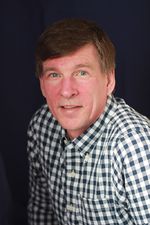James Magdanz: Difference between revisions
From Santa Fe Institute Events Wiki
(Created page with '{{Complex Systems Summer School 2013}} I first came to Alaska in 1978 as a photojournalist, fascinated by a group of Iñuit children I photographed while they visited an Iowa fa…') |
No edit summary |
||
| Line 1: | Line 1: | ||
{{Complex Systems Summer School 2013}} | {{Complex Systems Summer School 2013}} | ||
[[Image:jimmagdanz.jpg|150px|{border}]] | |||
I first came to Alaska in 1978 as a photojournalist, fascinated by a group of Iñuit children I photographed while they visited an Iowa farm. The Iñuit were self-confident, calm, mature, and cooperative. They shed no tears, threw no tantrums, and played with great joy. I wondered, “What kind of place raises kids like this?” So I moved to Arctic Alaska, where I spent 30 years living in and studying Iñuit communities. In 1981, I joined the Division of Subsistence, a social science research group in the Alaska Department of Fish and Game. There, a “simple” estimation problem (double counting of cooperative harvests involving multiple households) developed into a continuing interest in social network analysis as a method to understand small-scale economies. We now have detailed socio-economic network data for more than 35 remote communities. In 2012, to improve my network analysis skills, I resigned from the Division of Subsistence to pursue a PhD in “Natural Resources and Sustainability” at the University of Alaska in Fairbanks. I am looking forward to learning from my fellow students at the Complex Systems Summer School. | I first came to Alaska in 1978 as a photojournalist, fascinated by a group of Iñuit children I photographed while they visited an Iowa farm. The Iñuit were self-confident, calm, mature, and cooperative. They shed no tears, threw no tantrums, and played with great joy. I wondered, “What kind of place raises kids like this?” So I moved to Arctic Alaska, where I spent 30 years living in and studying Iñuit communities. In 1981, I joined the Division of Subsistence, a social science research group in the Alaska Department of Fish and Game. There, a “simple” estimation problem (double counting of cooperative harvests involving multiple households) developed into a continuing interest in social network analysis as a method to understand small-scale economies. We now have detailed socio-economic network data for more than 35 remote communities. In 2012, to improve my network analysis skills, I resigned from the Division of Subsistence to pursue a PhD in “Natural Resources and Sustainability” at the University of Alaska in Fairbanks. I am looking forward to learning from my fellow students at the Complex Systems Summer School. | ||
Latest revision as of 21:03, 14 March 2013
| Complex Systems Summer School 2013 |
I first came to Alaska in 1978 as a photojournalist, fascinated by a group of Iñuit children I photographed while they visited an Iowa farm. The Iñuit were self-confident, calm, mature, and cooperative. They shed no tears, threw no tantrums, and played with great joy. I wondered, “What kind of place raises kids like this?” So I moved to Arctic Alaska, where I spent 30 years living in and studying Iñuit communities. In 1981, I joined the Division of Subsistence, a social science research group in the Alaska Department of Fish and Game. There, a “simple” estimation problem (double counting of cooperative harvests involving multiple households) developed into a continuing interest in social network analysis as a method to understand small-scale economies. We now have detailed socio-economic network data for more than 35 remote communities. In 2012, to improve my network analysis skills, I resigned from the Division of Subsistence to pursue a PhD in “Natural Resources and Sustainability” at the University of Alaska in Fairbanks. I am looking forward to learning from my fellow students at the Complex Systems Summer School.

